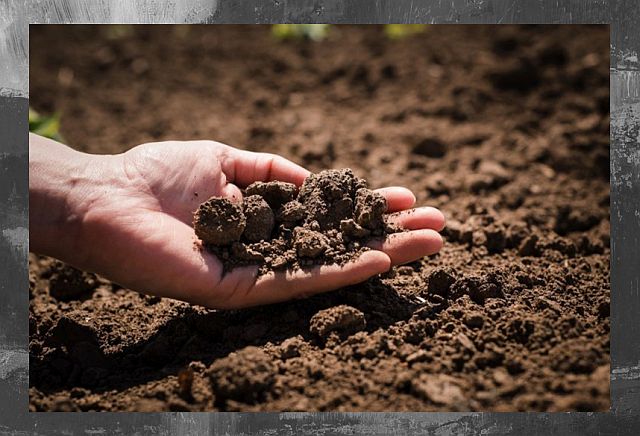The Napa Warning
The vine diseases Red Blotch and Leaf Roll plague Napa and Sonoma causing vines to last only a few years before being pulled up and destroyed. And as reported by UCCE at UC Davis there has also been a huge surge in the vine-killing illness Pierce’s Disease.
Viticulture experts in both Napa and Sonoma counties report “an alarming increase in the number of vines being destroyed due to Pierce’s, including in areas where they haven’t seen the disease before, raising anxiety levels (and financial pain) among local vintners.”
“Now every 10 years you have to pull everything out and replant,” says the eminent Chuck Wagner, who owns Caymus Vineyards in Rutherford. He describes how this excessive replanting hurts a winery’s economics and is problematic from an environmental standpoint. It also robs a vine of its legacy: “farewell, old-vine cuvees.”
This concern is also voiced by Andy Beckstoffer’s General Manager Dave Michul stating that such a short life span is now typical. “In Napa a vineyard lasts a few years or so and needs replanting.”
Events are changing so fast that more recently in Wines & Vines the headline shocks. In the lead paragraphs of the article, Brittany Pederson, a viticulturist as well as the co-chair of the Grapegrowers’ committee, said more growers are moving to 10-and even five-year replant schedules. “Definitely the virus and disease pressure have been a huge portion of that,” she said.
Five years?! By the time fruit starts to grow on the vine in Napa, around the third to fourth year, the vine is yanked. This is the end of any quality wine production in Napa or really any wine growing itself without disastrous economics. Since it takes 4 to 5 years to obtain decent fruit, a vineyard now in Napa has only 2 or 3 years of grape production (out of ten), then the vines are in decline and quickly gone. A vine can last 100 years and for centuries wine quality was connected to vine age ~ 30 to 40 or more years being the ideal.
Napa can no longer be considered a viable wine region. Unprecedented global warming also has much to do with Napa’s demise as a vine growing region.
But in particular the onslaught of these diseases is also greatly due to the fact that Napa has poor and mostly unproductive soils coupled with ubiquitous and crowded mutant vines in vineyards that lineup side to side (with no disease barrier) for miles and miles. There is also the major mildew, botrytis and rot problem in Napa also due to the genetic modified rootstock that overruns Napa as well as France (even worse in that country). The grafted mutated rootstock’s lack of resistance to mildew, rot and botrytis is well-studied and documented and another threatening attack on many fronts.
To combat this peril of mildew, rot and botrytis, vineyard managers are relying more and more on a frightening assortment of fungicides which have now unleashed one of the most unnerving problems to ever face vineyards and wine. This new heavy fungicide use (up to 14 of these dangerous fungicides have been revealed in a single bottle of French wine) not only poses one of the most serious human health problems, but it affects the taste and overall perception of wine. The clever chemists, though, have genetically built-in flavors within the deadly fungicides.
The Napa Plight and Global Warming
Brent Hallock addressed a Paso Robles audience of 300 winemakers, viticulturalists, and oenological enthusiasts regarding the other now insurmountable problems that exists in Napa and many other regions of California. Professor Hallock, an esteemed professor from Cal Poly University in San Luis Obispo, explained that with the reevaluation of grape-growing areas in light of global warming, the consensus of earth and climate scientists, including the National Academy of Science, is that the Westside of Paso Robles is the only Premium Wine Growing Region in California and will continue to be so because of unique coastal advantages.
Napa he said, because of global warming, has fallen out of a premium winegrowing area based on climatological negatives. Napa’s average temperature has risen and humidity has increased. Humidity has increased in France and as pointed out the mildew and rot challenges have heightened substantially.
A study published in the journal Proceedings of the National Academy of Sciences “forecasts temperature increases triggering the loss of two-thirds or more of the Napa Valley’s current grape output by 2050, with similar losses projected in France and other prime winemaking regions.” It must be repeated to even begin to comprehend how serious are these studies and the implications.
Likewise the Union of Concerned Scientists studied Napa Valley specifically, and concluded in a similar projection that these climate changes will indeed seriously threaten Napa’s future. These are warnings not from just anyone. These are from the National Academy of Science (the most prestigious scientific association in this country and the nation’s foremost scientific body), as well as the Union of Concerned Scientists (the august and leading science-based nonprofit working for a healthy environment) — specifically regarding Napa vineyards.
One scenario assumed a rise in average temperature of 4.5 degrees Fahrenheit, while a second assumed average warming of 8.5 F. In either case, the Academy’s model predicted “sharp production losses as rising temperature forces growers to irrigate more frequently to ward off heat damage, move vines to higher and cooler elevations, or pull out of unprofitable areas altogether.”
According to projections, quality wine grapes could only be grown in a thin strip of land along the coast (mainly Central Coast) of California. The band lies about 10 miles from the Pacific. Vineyards outside of the band will begin to suffer as is now the case in Napa. Napa is approximately 40 miles from the ocean, Santa Ynez is around 20.
Carmody McKnight in the far Westside of Paso Robles is one of the closest vineyards to the Pacific, around 7 miles, but interestingly not adversely affected by the proximity with downsides such as excessive fog and moisture and limited sunlight. Of most all of the vineyards in California, Carmody McKnight is ideally positioned to prosper in the future.
Major viticulturalists agree the Paso Robles Westside will arise as the supreme wine area in the world far surpassing Napa which has major viticultural problems that have been outlined herein. Paso Robles Westside is unmatched in the world as a viticultural and oenological phenomenon.
It’s a mystery why Napa went down the road of factory farming and chemical wines, petroleum fertilization, anti-sustainability, and genetic manipulation everywhere. Maybe worst of all was the rush to high-density planting — 3,000 to even 4,000 vines per acre (Carmody McKnight, as an example, as was the original Justin, — a little over 700 vines per acre). Such extreme densities completely defy basic farming logic where vines and roots have barely any room to grow and desperate for whatever minute nutrients might be available, meaning more and more petroleum fertilizers and fighting for the declining (and contaminated thanks to petroleum fertilizers) water supply.
So they find themselves now with a disaster that was predicted years ago by leading viticulturalists and earth scientists. Will other areas of California, specifically the Central Coast, heed the warning?





